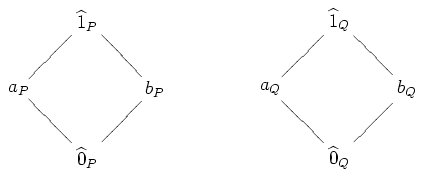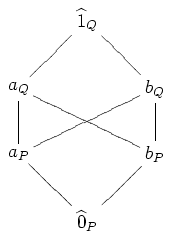Star product
In mathematics, the star product is a method of combining graded posets with unique minimal and maximal elements, preserving the property that the posets are Eulerian.
Definition
The star product of two graded posets and , where has a unique maximal element and has a unique minimal element , is a poset on the set . We define the partial order by if and only if:
- 1. , and ;
- 2. , and ; or
- 3. and .
In other words, we pluck out the top of and the bottom of , and require that everything in be smaller than everything in .
Example
For example, suppose and are the Boolean algebra on two elements.

Then is the poset with the Hasse diagram below.

Properties
The star product of Eulerian posets is Eulerian.
See also
- Product order, a different way of combining posets
References
- Stanley, R., Flag -vectors and the -index, Math. Z. 216 (1994), 483-499.
This article incorporates material from star product on PlanetMath, which is licensed under the Creative Commons Attribution/Share-Alike License.